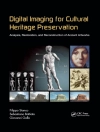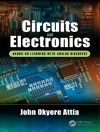Mysterious ‘supercharge effects, ‘ encountered in formation testing pressure transient analysis, and reservoir invasion, mudcake growth, dynamic filtration, stuck-pipe remediation, and so on, are often discussed in contrasting petrophysical versus drilling contexts. However, these effects are physically coupled and intricately related. The authors focus on a comprehensive formulation, provide solutions for different specialized limits, and develop applications that illustrate how the central ideas can be used in seemingly unrelated disciplines. This approach contributes to a firm understanding of logging and drilling principles. Fortran source code, furnished where applicable, is listed together with recently developed software applications and conveniently summarized throughout the book. In addition, common (incorrect) methods used in the industry are re-analyzed and replaced with more accurate models, which are then used to address challenging field objectives.
Sophisticated mathematics is explained in ‘down to earth’ terms, but empirical validations, in this case through Catscan experiments, are used to ‘keep predictions honest.’ Similarly, early-time, low mobility, permeability prediction models used in formation testing, several invented by one of the authors, are extended to handle supercharge effects in overbalanced drilling and near-well pressure deficits encountered in underbalanced drilling. These methods are also motivated by reality. For instance, overpressures of 2, 000 psi and underpressures near 500 psi are routinely reported in field work, thus imparting a special significance to the methods reported in the book.
This new volume discusses old problems and modern challenges, formulates and develops advanced models applicable to both drilling and petrophysical objectives. The presentation focuses on central unifying physical models which are carefully formulated and mathematically solved. The wealth of applications examples and supporting software discussed provides readers with a unified focus behind daily work activities, emphasizing common features and themes rather than unrelated methods and work flows. This comprehensive book is ‘must’ reading for every petroleum engineer.
Об авторе
Tao Lu, Ph D, Vice President, China Oilfield Services Limited, leads the company’s logging and directional well R&D activities, also heading its formation testing research, applications and marketing efforts. Mr. Lu is recipient of numerous awards, including the National Technology Development Medal, National Engineering Talent and State Council Awards, and several COSL technology innovation prizes.
Xiaofei Qin graduated from Huazhong University of Science and Technology with a M.Sc. in Mechanical Science and Engineering. At China Oilfield Services Limited, he is engaged in the research and development of petroleum logging instruments and their applications. Mr. Qin has published twelve scientific papers and obtained twenty patents.
Yongren Feng is a Professor Level Senior Engineer and Chief Engineer at the Oilfield Technology Research Institute of China Oilfield Services Limited. He has been engaged in the research and development of offshore oil logging instruments for three decades, mainly responsible for wireline formation testing technology, electric core sampling methods and formation testing while drilling (FTWD) tool development.
Yanmin Zhou received her Ph D in geological resources engineering from the University of Petroleum, Beijing and serves as Geophysics Engineer at COSL. She participated in the company’s Drilling and Reservoir Testing Instrument Development Program, its National Science and Technology Special Project, and acts as R&D engineer for national formation testing activities.
Wilson Chin earned his Ph D from M.I.T. and his M.Sc. from Caltech. He has authored over twenty books with Wiley-Scrivener and other major scientific publishers, has more than four dozen domestic and international patents to his credit, and has published over one hundred journal articles, in the areas of reservoir engineering, formation testing, well logging, Measurement While Drilling, and drilling and cementing rheology. Inquiries: [email protected].












